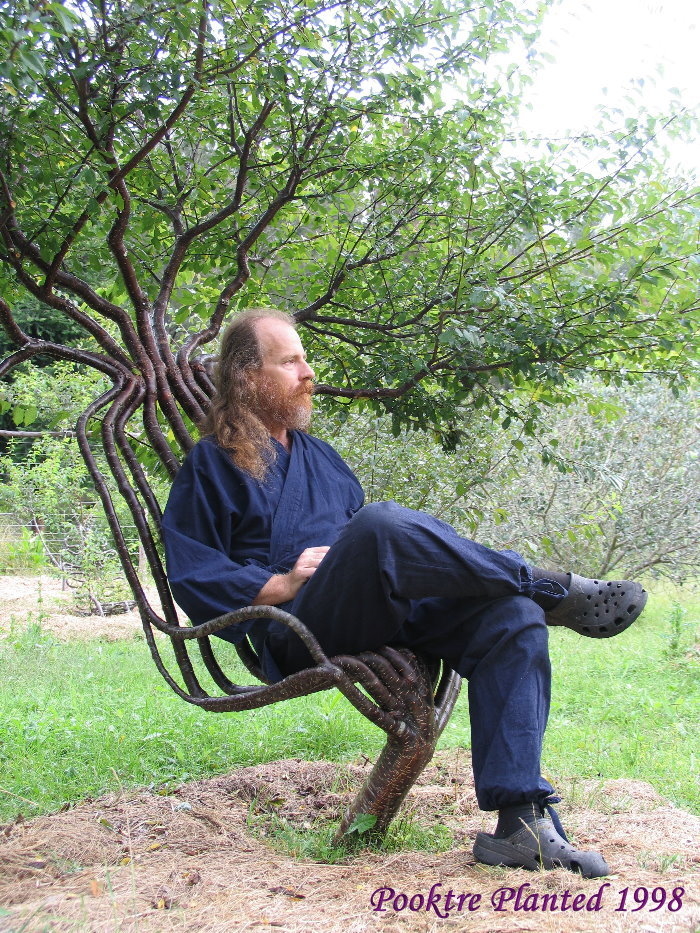The effort to track the wily killer's movements is the result of a major effort to involve citizens in the battle against the mysterious pathogen, which has killed tens of thousands of oak trees from Big Sur to southern Oregon.
Scientists at the Forest Pathology and Mycology Laboratory at UC Berkeley used tree and plant samples collected by citizens over the past two years and documented infestations in, among other places, Atherton, Oakland, Hercules, Mill Valley and on the Berkeley campus itself.
"Last year we had about 240 participants and collected over 1,000
 samples. These results were placed on a map so people can see where the positives are," said Matteo Garbelotto, a UC Berkeley forest pathologist and the nation's foremost expert on sudden oak death. "This is part of the solution. If we educate and involve individual property owners, we can make a really big difference."
samples. These results were placed on a map so people can see where the positives are," said Matteo Garbelotto, a UC Berkeley forest pathologist and the nation's foremost expert on sudden oak death. "This is part of the solution. If we educate and involve individual property owners, we can make a really big difference."The map shows infestations spreading throughout the East Bay, especially in the Hercules-Pinole area, Orinda, Moraga and in Redwood Regional Park, Wildcat Canyon and Tilden Park. It is creeping toward south Oakland and has recolonized on the Berkeley campus after it was thought to have been eliminated nine years ago, Garbelotto said. The pathogen is moving southward and eastward along the Peninsula, where it has infested Woodside, Atherton and Los Altos, according to the map. It was detected all over Tamalpais Valley, in Marin County, and just west of Healdsburg and Windsor in Sonoma County.
"Tamalpais Valley is an entire community that lives in a forested area that is really infected," Garbelotto said. The same goes for Carmel Valley Village, where the microbe was detected in several trees on the edge of the community. "It is a prime area for the disease to explode. The houses themselves are in the forest, so I can really see some potentially dangerous consequences," Garbelotto said. "The people there don't really know what is going to hit them."
Sudden oak death, first discovered in Mill Valley in 1995, exists in forests and wildlands in 14 California counties and in Curry County, Ore. It kills oak trees, especially tan oaks, which have nearly been wiped out in portions of Big Sur, Sonoma Mountain, Jack London State Park, China Camp State Park and Marin Municipal Water District watershed lands near Mount Tamalpais.
The disease, known scientifically as Phytophthora ramorum, also has 107 susceptible host plants, including such common garden ornamentals as camellias and rhododendrons. Most hosts survive, but they help spread the disease to oaks. Researchers have found that infected California bay laurels are the most effective spreaders of the deadly microbe. Symptomatic bay leaves are often the first sign that the pathogen has arrived at a location. The pathogen also is known to spread in water and has been detected in numerous waterways, including the Crystal Springs Reservoir.
Arborists and ecologists are afraid that sudden oak death could eventually denude California's golden hills of its signature tree. As it is, experts predict as many as 90 percent of California's live oaks and black oaks could die within 25 years. The mapping of the disease, which was funded by the U.S. Forest Service, was possible because of what Garbelotto called "SOD blitzes."
The blitzes, which have attracted almost 500 participants around the Bay Area over the past three years, are organized by neighborhood and community groups. In them, citizens go out and collect mostly bay leaves that are then tested in the Berkeley laboratory. It is the first community-based effort to combat the disease.
John Chavez, a retired telecommunications technician and gardener, said he was among 50 people who collected samples in Sonoma County over a three-day period in April. "This is a way for people to get involved and help in this seemingly relentless problem," said Chavez, 58, of Santa Rosa, who learned that the disease has spread from Healdsburg west toward Forestville, Occidental and Sebastopol. "I want to help save our native California oaks. The more of us who get involved, the better chance we have of stopping this deadly pathogen." Homeowners in infected areas can remove bay trees, a step that he said can increase the survival rate of nearby oaks tenfold, Garbelotto said. Oak trees also can be sprayed with phosphonate, which has proved to be effective against the disease.
Garbelotto urged people in infected areas not to do large-scale projects such as grading, soil removal or tree pruning during the rainy season because it can help spread the disease.
"Each community that learns they have sudden oak death in their neighborhoods should say, 'Hey I better do something,' because by the time you notice the trees are dying, it is already too late," Garbelotto said. "We aren't curing the disease, but if we can continue to involve hundreds
of people a year in the fight, it will have an impact on the survival of the tree."
For more information, here is the complete article.
To have your trees checked for this deadly disease, please call us at 650-367-4900







 Established in 1938 as the National Arborist Association, today's TCIA is a trade association of more than 2,000 commercial tree care firms and affiliated companies.
Established in 1938 as the National Arborist Association, today's TCIA is a trade association of more than 2,000 commercial tree care firms and affiliated companies.